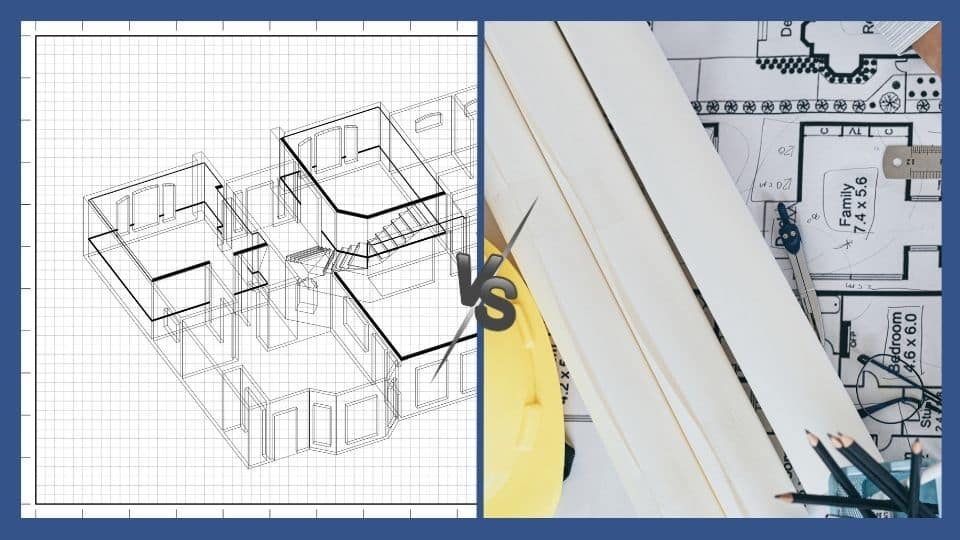The Art of Equilibrium: Exactly How Interior Design and Home Architect Collaborate for Stunning Outcomes
In the realm of home layout, striking a balance in between aesthetic appeals and functionality is no small accomplishment. This fragile stability is attained via the unified cooperation in between indoor developers and engineers, each bringing their unique expertise to the table. Stay with us as we explore the complexities of this collective process and its transformative impact on home design.
Comprehending the Core Distinctions In Between Inside Design and Home Style
While both Interior Design and home architecture play vital functions in developing visually pleasing and functional areas, they are inherently various techniques. Home style largely concentrates on the architectural facets of the home, such as developing codes, safety regulations, and the physical construction of the room. It handles the 'bones' of the structure, collaborating with spatial measurements, load-bearing wall surfaces, and roofing system layouts. On the various other hand, Interior Design is a lot more worried with boosting the aesthetic and sensory experience within that structure. It involves choose and arranging furniture, picking color schemes, and integrating ornamental components. While they function in tandem, their duties, obligations, and locations of know-how deviate substantially in the creation of an unified home environment.
The Harmony Between Home Design and Inside Design
The synergy between home style and Interior Design depends on a shared vision of layout and the improvement of functional aesthetic appeals. When these two areas line up harmoniously, they can transform a space from ordinary to extraordinary. This collaboration requires a much deeper understanding of each discipline's concepts and the capacity to produce a cohesive, cosmetically pleasing atmosphere.
Unifying Layout Vision
Combining the vision for home architecture and indoor layout can create a harmonious living area that is both functional and cosmetically pleasing. It promotes a synergistic method where architectural components complement indoor design components and vice versa. Hence, unifying the style vision is crucial in blending style and indoor design for stunning results.
Enhancing Functional Visual Appeals
How does the harmony between home design and interior design enhance practical appearances? Designers lay the foundation with their architectural design, ensuring that the space is useful and effective. An architect may make a residence with high ceilings and big windows.
Relevance of Collaboration in Creating Balanced Spaces
The partnership between indoor developers and designers is crucial in creating well balanced areas. It brings harmony in between design and design, offering birth to spaces that are not just visually pleasing but also practical. Checking out successful collaborative strategies can provide understandings into just how this synergy can be effectively attained.
Integrating Style and Architecture
Equilibrium, an essential aspect of both interior layout and design, can just really be accomplished when these 2 fields work in harmony. This joint process results in a cohesive, well balanced style where every aspect contributes and has a function to the overall visual. Harmonizing style and style is not just about producing attractive spaces, but about crafting spaces that work flawlessly for their citizens.
Successful Collective Strategies
-min.jpg)
Instance Studies: Effective Combination of Design and Design
Checking out a number of case studies, it ends up being obvious just how the successful assimilation of interior layout and architecture can transform a room. Designer Philip Johnson and interior developer Mies van der Rohe collaborated to produce a harmonious balance in between the inside and the structure, resulting in a smooth circulation from the outside landscape to the inner living quarters. These case studies underscore the extensive effect of an effective layout and architecture partnership.

Getting Rid Of Challenges in Style and Style Partnership
Despite the obvious benefits of an effective partnership in between interior style and style, it is not without its obstacles. Designers might focus on structural stability and security, while developers focus on comfort and style. Efficient interaction, mutual understanding, and compromise are crucial to conquer these difficulties and attain a unified and effective partnership.

Future Trends: The Evolving Connection In Between Home Architects and Inside Designers
As the globe like this of home design proceeds to advance, so does the connection in between architects and indoor developers. Alternatively, interior developers are embracing technological elements, affecting overall design and functionality. The future assures a more cohesive, ingenious, and flexible method to home layout, as developers and engineers proceed to blur the lines, fostering a partnership that truly symbolizes the art of equilibrium.
Final thought
The art of equilibrium in home design is accomplished via the unified collaboration in between indoor designers and engineers. An understanding of each other's self-controls, efficient communication, and shared vision are vital in producing aesthetically magnificent, useful, and welcoming rooms. Regardless of difficulties, this collaboration promotes growth and technology in design. As the relationship in between home engineers and interior designers develops, it will certainly remain to shape future patterns, improving comfort, efficiency, and individual expression in our home.
While both indoor style and home architecture play essential functions in developing webpage visually pleasing and useful spaces, they are inherently various self-controls.The harmony between home architecture and indoor style exists in a shared vision of style and the enhancement of functional aesthetic appeals.Linking the vision for home architecture and interior layout can develop an unified living room that is both useful and aesthetically pleasing. Hence, unifying the design vision is important in blending design and indoor layout for stunning results.
How does the synergy in between home architecture and indoor style boost functional aesthetics? (Winchester architect)